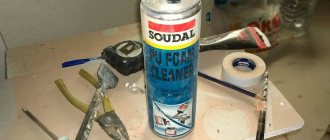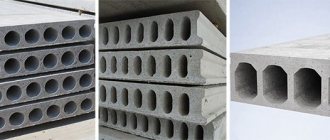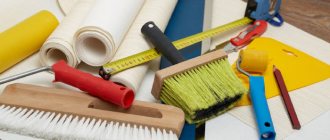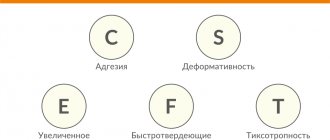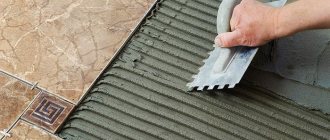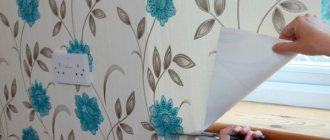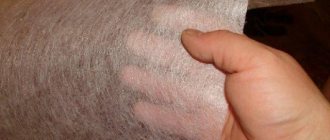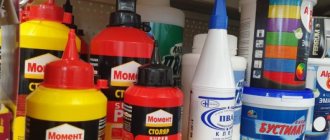About five years ago, foam adhesive for expanded polystyrene (EPS) appeared in construction stores. It ensures strong adhesion of materials. Manufacturers promise that this tool is convenient to use even without the help of specialists.
- Purpose
- Specifications
- Advantages
- Flaws
- Differences between polystyrene foam and polystyrene foam
- Adhesive foam for polystyrene foam: brands
- TechnoNIKOL
- Akfix 960
- Makroflex MF 901
- Ceresit CT 84
- Tytan Styro 753
- Foam adhesive consumption for polystyrene foam
- Application technique
- Storage rules
Professional builders are familiar with this adhesive composition. And for those who do not know what it is for and how to use it, the article discusses:
- purpose of the remedy;
- specifications;
- advantages and disadvantages;
- popular brands TechnoNIKOL, Makroflex and others;
- application technique;
- consumption, storage rules.
Features of foam fastening
When installing thermal insulation, first of all you need to think about how you plan to install the insulation. If a standard insulation scheme is envisaged, such as a wet facade, then the material itself is laid on a special mastic or glue.
The same applies to foam plastic. Moreover, expanded polystyrene is characterized by extremely low weight, which only increases its convenience in working with a variety of mastics.
After all, you don't have to worry about lightweight foam boards being too heavy for the glue to carry. Even the weakest solution can handle their weight.
However, standard mixtures (which builders simply call glue in everyday life) do not have special properties. Or they do, but working with them is not as easy as it seems.
These are rather archaic compositions that in their structure resemble standard tile adhesive. They do an excellent job of installing decorative elements, but working with insulation (especially if it is liquid foam) is a different matter. Here it is advisable to have specialized tools and materials.
Moreover, it is important to take into account that being a polymer material with a lot of air inside, foam can be damaged quite easily.
For example, if you apply an element that contains solvents to the surface of expanded polystyrene, it will simply eat through the slab. Moreover, this will take very little time, and it is almost impossible to prevent the process.
This is why builders so often decide to use modern adhesive foam for installation and fastening of polystyrene foam. This material was specially produced for maximum effective interaction with expanded polystyrene.
1.1 Properties of adhesive foam
Adhesive foam for insulating a frame house with polystyrene foam is an improved composition. It was originally conceived as a material for attaching foam thermal insulation. And therefore it has all the necessary characteristics or properties.
Expanded polystyrene boards that were attached using adhesive foam
Adhesive foam is sold mainly in cans. For example, AKFIX 960 adhesive foam is sold in cylinders and is enough to install approximately 12 m2 of insulation made of polystyrene foam, penoplex or any other material.
On the one hand, working with cylinders is quite convenient. And by and large, manufacturers had no alternative.
After all, foam adhesive is predominantly a polyurethane foam binder made from one component. A kind of polyurethane foam, only aimed at improved adhesion and adhesion to the foam.
That is, polyurethane foam, like installation foam, hardens upon contact with air. After just 20 minutes, most compounds like AKFIX 960 gain density and form a crust, and after another 20-30 minutes they can only be cut off with a knife.
Adhesive foam can be applied exclusively with a gun, even on foam moldings. Moreover, it is advisable to use specialized models for this, which were originally intended for professional application of compounds.
1.2 Pros and cons
Adhesive foam for polystyrene foam has a large number of advantages. Not only those we have already named, but also many more subtle parameters, which, nevertheless, also seriously affect the ease of use.
Main advantages:
- The cylinder is enough for an area of thermal insulation of 10 m2, and you can change it very quickly, and there is no need to knead or prepare the composition at all.
- The foam is easy to apply and also easy to cut.
- After 2 hours you can already work on the thermal insulation.
- Excellent adhesion to any materials, including metals.
- Eco-friendly.
- Easy to dose.
- Almost no expansion on foam.
- Performs fastening efficiently and tightly.
As you can see, there are a lot of advantages. Of these, it is important to immediately highlight a couple of points that, in fact, are decisive.
An example of attaching a foam canister to a professional gun
The first of these is the drying time. The second is the possibility of precise dosing and good adhesion to any base.
You need to understand that installing the same penoplex on a standard binder mortar is quite labor-intensive. The entire surface of the penoplex needs to be coated, then the slab must be glued, adjusted, excess mortar removed, etc. And after that, which is very important, wait almost a day until the mixture sets.
It’s not worth mentioning that if you didn’t calculate the work very correctly (and even if you did), then the subsequent installation of penoplex and its finishing can only be carried out the next day, and this is in the best case.
The second point is adhesion (especially important when insulating a pipeline with Thermaflex). Not every glue allows you to install even penoplex on the same smooth concrete. But penoplex is characterized by exceptionally low weight and small dimensions.
Adhesive foam eliminates all these problems. All you need to do is simply apply it to the surface of the penoplex. Then it's a matter of technique.
The slab is easy to glue, and it is just as easy to position (after all, very little glue is needed and it is applied in dense strips). At the same time, within 2 hours the slabs set and you can begin further work without wasting time.
This is why foam adhesive is so popular. It saves you time and nerves, while allowing you to operate with maximum comfort and efficiency.
As for the minuses, the following points can be noted:
- Adhesive foam is more expensive than standard solutions.
- It can only be applied with a pistol, and it is better if it is a professional tool.
But what's the problem with needing a gun for your job, you ask? Everything would be fine, but such a pistol is quite expensive. From hundreds of dollars for a high-quality low-level sample.
But you won’t be able to stick a lot of slabs with a simple gun, it’s too tedious a process.
Foam Adhesive Manufacturers
If you purchased glue made in Germany or France, then this is the best composition that has exceptional properties. The next best quality compositions are Turkish, Estonian and Polish solutions.
If we talk about domestic manufacturers, then everything is debatable; you can find a good composition, but you can stumble upon low-quality glue.
You should not buy foam made in China. Such polyurethane compounds are short-lived and quite often toxic.
For work it is recommended to use:
- T-Avangard-K. Used for gluing insulation boards to concrete, brickwork, and gypsum plaster. Sold in the form of dry powder mixtures, which are diluted with water (5-6 liters of water per 25 kg). Mixtures of this type are available in winter (from -10 to +5 degrees) and summer (from +5 to +35 degrees).
- Tytan Styro 753. This one-component adhesive is sold ready-made, in cans. You can grind the surface and attach the dowels within 2 hours after gluing the insulation.
- Ceresit CT 83. Also sold in dry form, in packages of 25 kg. To prepare the mixture, 1 kg of composition will require 0.22 ml of water.
- TechnoNIKOL. Polyurethane foam has good adhesion and is often used in professional construction. TechnoNIKOL compositions are not afraid of moisture and, despite the fact that the foam was created for interior work, it can also be used for exterior decoration.
- Macroflex. The compositions of this brand are also available in winter and summer. At low temperatures the composition expands less. Macroflex 65 foam is characterized by an expansion of 100%.
Having chosen the highest quality composition, all that remains is to apply it correctly, taking into account all the nuances of working with foam.
Recommendations for the use of Titan foam
The combined use of Titanium foam and penoplex is not particularly difficult, although for high-quality and reliable fixation of the insulation it is recommended:
- before treatment, clean the surface and lightly moisten it with water, which will increase the expansion volume and setting speed;
- Before use, shake the container;
- when spraying, hold the container upside down;
- seams must be filled from bottom to top;
- after hardening, the excess foam is cut off, and the place of application is covered with any protective materials, since the “installation” is destroyed under the influence of direct sunlight (plaster, silicone or acrylic sealants).
When performing work, you should follow safety and industrial hygiene rules, do not spray near an open fire, and do not heat the used aerosol can over a fire or pierce it. Additional costs for purchasing fixing devices will pay off in winter, allowing you to save on heating.
Foam adhesive consumption for polystyrene foam
Before work, the technician needs to make sure that the purchased product is enough for the entire scope of repairs. To do this, you need to study the packaging and find information about the consumption, which depends on the weight of the bases being glued.
For example, TechnoNIKOL foam adhesive has a higher concentration of active ingredients: 600 grams in a 750-milliliter container. Therefore, on average, one cylinder will be enough to cover 10 to 12 square meters of surface.
Experts advise making a preliminary calculation of consumption in order to stock up on the required number of cylinders of one brand. Don’t risk buying products from other brands later, because each manufacturer has its own quality of sizing.
Differences between polystyrene foam and polystyrene foam
Foam adhesive for polystyrene foam and compositions for polystyrene foam have differences in structure. Foam plastic is foamed plastic. There are dozens of types of plastic, therefore there are also many subtypes of foam.
Every foamed plastic is foam plastic, and polystyrene foam is its subtype. Sometimes in construction stores they can be passed off as the same material, but this is wrong. Builders, on the contrary, urge to distinguish them by separate names. Yes, they are similar in appearance, but they differ in structure and properties. Therefore, different adhesive foams are needed for such materials.
Types of adhesive foam
The composition of any type includes isocyanate oligomers. Substances under the influence of ambient oxygen displace isobutane and propane. Foam adhesives are produced in metal cylinders, the capacity of which is 400, 750, 1000 ml.
Types of glue:
- universal;
- polyurethane for polystyrene foam, for XPS boards;
- for PIR and PUR panels.
The universal composition is produced in one-component form for internal and external use. Not only insulation is placed on it, but also decorative interior elements made of wood, tin, and plastic. It resists moisture and aging well, and adheres well to materials. Adhesive foam blue.
Polyurethane adhesive is used for installation of extruded and pressed polystyrene foam. This adhesive foam is also used for fastening lining, PVC strips, cardboard, and ceramics.
Foam adhesive for PIR and PUR panels turns gray after hardening. The setting time is increased compared to the universal material.
Purpose
This is a composition with a limited scope of application, it is not universal. It was developed for securing slabs made of extruded polystyrene foam. Compatible with standard PPS.
This type of adhesive is used to secure the slab to the bases when installing thermal insulation systems. Some mixtures can be used for all types of work, some of them can only be used for external or internal work. Adhesive foam is used to install thermal insulation of building foundations, roofs, basements, floors, and walls.
We use an inexpensive analogue
If there is a lack of funds, you can attach polystyrene foam to polyurethane foam. In order to reduce its consumption, install the insulation using a gun.
When choosing polyurethane foam for penoplex, polystyrene foam and other polystyrene foams, pay attention to its components. It should not contain toluene, alcohols, solvents, or other substances that lead to destruction of the structure.
The procedure for preparing the surface and applying the mixture to the slab does not change. Before gluing the foam, the wall must be moistened with water. Brick and concrete – generously, wooden – lightly.
There are some small peculiarities of fastening penoplex and polystyrene foam with polyurethane foam. They are due to the low speed of gaining the required density. When used in the same manner as adhesive foam, the slabs will need to be held in place for a long time (from 40 minutes to an hour). But this can be avoided.
After applying the composition, apply it to the surface for 3-5 seconds and shake the slab from side to side. Tear it off. Re-apply the mixture to it in a volume equal to half of the required amount. Wet the foam with water from a spray bottle.
Let the process of hardening and gaining density begin. The operating time will take from 2 to 4 minutes (during this time, prepare for the next installation). Then place the plate in place and press it firmly for 10 seconds. You can attach the next one.
This use case will significantly speed up the work process and eliminate the need to use supports and spacers.
What's wrong with it
Even if you follow all the technology requirements and these tips, it is difficult to avoid the disadvantages of using polyurethane foam.
Gluing foam takes much longer and requires more labor.
A gradual increase in the volume of foam that continues after application leads to deformation of the sheets, uneven surfaces, and the formation of gaps.
Repeated application increases the consumption of the adhesive base.
When choosing foam for installation, evaluate the advantages and disadvantages of each, including ease of use and cost.
Insulating a house with polystyrene foam places high demands on the compounds used. The adhesive and binding element must ensure good adhesion (adhesive strength) and durability of use, and the application technology must ensure the selected foam.
For reviews of attaching polystyrene foam to foam, watch the video:
Specifications
To understand the functions of the tool, you will need to study its technical characteristics. The basis of the composition is polyurethane, a polymer with increased adhesion.
It is convenient to work with adhesive foam. It is resistant to water and moisture. Economical, sets quickly. Therefore, the insulation of facades takes place in a short time. Such compositions are resistant to temperature changes and have good heat-insulating properties.
Advantages
One package will be enough to treat ten square meters of surface. The master does not need to prepare the composition by stirring the components or diluting it with water. It is already ready for use.
Other benefits:
- After application, the adhesive seam almost does not change its shape and does not expand.
- Applying foam is convenient and easy. It will not be difficult to remove excess material. To do this, use paint solvents or a special cleaner, which is offered by many manufacturers of polyurethane foam.
- Primary setting occurs in 1-2 hours. Complete hardening of the composition will be completed within 24 hours.
- The resulting seams will be strong and reliable.
These factors are the opposite of most other adhesives. They need more time to harden, which leads to an increase in finishing time.
Flaws
Compared to similar products, mounting adhesive foams are sold at higher prices. This composition must be applied with a professional glue gun, which is not included in the kit, so you will need to purchase it separately.
However, not all manufacturers produce products that meet all the declared qualities. Therefore, first we recommend that you study the reviews of specialists about working with products from specific brands on the Internet.
How to choose the right polyurethane foam
To ensure high-quality fastening of insulation, professionals recommend following several rules when choosing a composition. Check them out:
- Great glue is never very runny. To determine its condition, it is enough to squeeze out a few drops. It is better to make purchases in specialized construction stores that have verification testers.
- The mixture should not be too dense. When working with polystyrene foam boards, too much dense composition will be required. A normal 800 ml cylinder is designed for a flow rate of 125 ml/m2.
- The composition must withstand sub-zero temperatures. Before purchasing glue, you need to read its description. The label must indicate the operating temperature. It must withstand its plus and minus values.
- The foam should not contain carbon dioxide or freon admixture. The presence of isocyanate oligomers is welcome.
- The polyurethane foam should set within 10-15 minutes.
- The degree of adhesion relative to foam plastic must exceed 0.8 MPa.
What to look for when choosing foam adhesive
In order to adhere the insulation for a long time and with high quality, when choosing polyurethane foam, you must consider the following recommendations:
- Good glue should not be liquid. This indicator can only be determined by squeezing out a little solution. Therefore, it is better to buy glue in large construction stores where there are “testers”.
- Density and vapor permeability of the composition. If the adhesive for polystyrene foam is denser, then a larger amount of the composition will need to be used for finishing. Normal foam consumption (with a cylinder volume of 800 ml) is about 125 ml/m2.
- The glue must be resistant to low temperatures. Therefore, look for formulations whose label states that they can be used in sub-zero temperatures. Also, adhesive solutions must withstand elevated temperatures.
- The adhesive should not contain freon or carbon dioxide impurities. But isocyanate oligomers, on the contrary, are welcome.
- The foam setting time should be 10-15 minutes.
- The degree of adhesion in relation to concrete should be at least 0.3 MPa, and to foam plastic not less than 0.8 MPa.
You also need to pay attention to the manufacturer of the composition.
Rules for use in case of fixing penoplex and blowing seams
The crucial moment is the choice of foam. The presence of toluene in it will lead to damage to the building material and the need to purchase a new batch - and this is a serious expense. Therefore, it is better to spend a little more time in the store to choose the right option.
Before starting work, perform some manipulations with the cylinder.
Heat it up, no matter what season - winter or summer.
To heat, take a small container and fill it with warm water. Do not use hot under any circumstances. The cylinder is placed in a container - a low saucepan or a small ladle, so that the warm liquid reaches no more than the middle. This heating is sufficient for 5-10 minutes.
Application technique
TechnoNIKOL foam adhesive and other brands of such compounds must be used in strict compliance with the manufacturer’s instructions. To work correctly with such tools, they follow the following algorithm:
- pre-clean the surface from dirt and grease;
- put a nozzle gun on the glue bottle;
- foam adhesive for polystyrene foam is applied evenly (try to maintain the thinness of the layer required for gluing);
- then the glued part is placed on the surface with the material and pressed with force to secure it;
- the processed parts are left to harden for the time specified in the manufacturer’s instructions;
- It will take at least 1.5-2 days for the adhesive foam to completely harden.
How to treat after pruning
In all of the previously listed technologies, finishing materials serve as protection for polyurethane foam from the harmful effects of ultraviolet radiation. However, when using foam for its intended purpose, i.e. For the installation of structures, it is necessary to carry out work to protect the seams . For this, paint and varnish products, mounting tape, cement-sand mortar, and putty are used.
Ready putty TURY moisture resistant 1.7 kg. Photo by Maxidom
Is it possible to putty
You can putty the installation seams. To do this, you need to choose a high-quality putty. The mixture is prepared in accordance with the manufacturer's recommendations indicated on the packaging. The mixture is applied perpendicular to the seam , which ensures dense filling of cracks and voids. Before applying the putty, it is necessary to remove excess composition and go deeper into the seam, leaving room for the putty mixture. No sanding required. Then priming is performed, putty (starting and finishing) is applied in a thin layer. To ensure more reliable protection, it is recommended to paint the foam.
Operating procedure
Work is best carried out in calm, warm weather.
To thoroughly adhere polystyrene foam insulation, clean the surface to the material of the insulated surface. Set the starting bar strictly horizontally.
Its width is equal to the thickness of the sheet used. Remove dust by rinsing or sweeping. Prime the wall using a roller or brush. Treat the surface of the foam with a needle roller to improve contact with the adhesive.
Sticking foam is carried out in the following sequence:
- prepare the cylinder for use according to the instructions for use;
- screw the cylinder onto the gun, avoiding distortions;
- apply foam to the treated surface of the slab along the perimeter in a continuous strip about 3 cm high, then in the middle along the long side (the distance from the edge to the layer is at least 20 mm);
- install the stove in its designated place;
- if necessary, adjust its position, checking it using a long building level or rule;
- carry out subsequent stacking of sheets from bottom to top;
- Fill the resulting joints with foam;
- After 30 minutes, cut off the excess that appears with a construction knife.
To adjust the position of the sheet, the same polystyrene foam is used. Use a gun to pierce the foam and pump in the adhesive composition. The leaf retains its relative mobility for 10-20 minutes.
The use of adhesive foam makes installation work as easy as possible. The work can be carried out by one person, both on the surface of the earth and at height.
How to glue penoplex
When choosing a method for gluing penoplex, depending on the type of base:
- Striped, when the glue must be applied around the perimeter of the base in even stripes, maintaining a distance of 20 cm from the edge. The slabs must be glued carefully and carefully to avoid the formation of air pockets that impair thermal insulation.
- The beacon method, in which a strip is drawn around the perimeter of the slab and the center is filled pointwise.
- Continuous - the glue is distributed evenly on the surface of the slabs with a notched trowel.
To properly glue penoplex, you need to first prepare the base, clean it of dirt, apply a layer of primer, and wait for it to dry completely. To enhance adhesion, you need to glue the surface of the penoplex board, pre-treated with sandpaper. You should not apply glue at the junction of the insulation; EE tape is used for this purpose.
Penoplex gluing technology (2 videos)
Application technology
In fact, there is nothing complicated in the process of attaching polystyrene foam using special adhesive foam. After all, it was designed to simplify this process.
Adhesive foam is applied to the foam board along the perimeter, with one clear tape
But we will still outline the algorithm of work and take into account several interesting nuances that may affect the result.
It is important to understand that the installation technology does not differ depending on the choice of the adhesive foam itself for attaching polystyrene foam. That is, AKFIX 960 foam will be applied in exactly the same way as Ceresit C-84 adhesive foam.
There are, of course, certain differences, but they relate rather to the technical side of the issue, without affecting the general process.
For example, AKFIX 960 cools faster than Ceresit, and therefore, after application, the slabs will also have to be glued more quickly. But again, even here the difference will be completely insignificant. The point is about differences in a matter of minutes, nothing more.
Stages of work:
- We clean the surface of the polystyrene foam from dirt and dust.
- Clean the base. If the base quickly absorbs moisture, prime it.
- We load the cylinder into the gun.
- Apply foam around the perimeter of the slab.
- Apply another strip of foam in the center of the slab.
- We glue the slab in the right place.
- Let's correct its position.
- We lay the remaining slabs.
- We blow out the joints between them with glue foam.
- Cut off the remaining hardened foam with a knife.
- After 20 minutes you can still trim the slab.
- After 2 hours, the foam has completely cooled and you can begin further processes, for example, drilling dowels or applying the first layer of plaster.
After use, the gun must be washed. Moreover, this is done both mechanically and with the help of special cleaning compounds.
Let us remind you that you can buy polystyrene foam in Orel at a favorable price.
Mechanical cleaning consists of cutting off excess foam from the supply tube, and chemical cleaning is carried out using cylinders with cleaning liquid. They are connected to the gun and the barrel of the instrument is pumped at maximum pressure until it completely leaks.
2.1 Selection of adhesive foam for polystyrene foam (video)
Is it possible to glue...
Such questions arise for the reason that polyurethane foam is sold at a more affordable cost . It is possible to glue insulation boards with polyurethane foam, but the material fixed in this way will not be able to withstand significant loads on the openings . to use mounting compounds as an alternative to glue for the following reasons:
- the adhesive foam contains special additives that improve adhesion, so the materials are fixed much more efficiently and with better quality;
- polyurethane foam has a high expansion rate , which is a negative characteristic for an adhesive material.
Axton professional mounting foam, 750 ml. Photo by Leroy Merlin
Thus, it is not recommended to save on building materials by replacing glue with foam. Since this may have negative consequences that will arise after some time. Peeling of the thermal insulation layer or other problems may occur As a result, each product must be used strictly for its intended purpose. However, there are situations when installation on foam is possible. In addition, there is interest in work of this type. Therefore, it is necessary to consider the sequence of work.
... plasterboard, how to glue it to the wall
The classic way to attach plasterboard sheets is to attach them to an assembled frame of profiles and guides. Fixation is carried out using ordinary self-tapping screws, the tool used is a drill. It is advisable to use polyurethane foam to fix gypsum board sheets in several situations:
Professional mounting foam MAKROFLEX 750 ml. Stroylandia Photos
Prompt installation required. Final setting occurs within several hours, which is significantly less than that of putty mixtures.
Small work area. Laying drywall on foam is not recommended if the number of gypsum board sheets placed on one surface exceeds eight pieces. Since fitting the elements is the most difficult part of the work.
A small number of small-sized plots. Blank walls are recommended as a base for fixing drywall to mounting foam. The presence of window and door openings complicates the work process. Small-sized elements are difficult to position in a single plane, which leads to the need to form an additional plaster layer.
Minor unevenness of the base. Installation can be carried out with surface defects with differences of no more than 30-50 mm.
Saving room space. Foam fixation minimizes space loss, which is especially important in small apartments and rooms.
Cheap work. The cost of installation with profiles and guides is significantly higher than the cost of performing work with foam.
When choosing polyurethane foam, it is recommended to pay special attention to products in the middle price segment. It is better to choose a composition from a well-known brand/manufacturer, which eliminates the purchase of low-quality products. The optimal solution is a composition with a low expansion coefficient.
Polyurethane foam TYTAN Professional Lexy 60 all-season 750 ml. Photo Petrovich
The installation process is not particularly difficult. Regardless of the installation technology, work begins with preparing the base . The surface is cleaned of old coating , dust and dirt. It is recommended to remove the plaster layer, if any, to eliminate the possibility of collapse. Gaps and cracks need to be covered . To level a through defect, it is necessary to make every effort to prevent the appearance of cold bridges. Areas damaged by fungus and mold are cleaned and treated with special products. Applying a primer improves adhesion, which is especially important for concrete bases. After the preparatory work has been completed, you can begin the main process. There are two technologies:
1) Applying foam to the sheet and then attaching it to the base . This technology is suitable for working with flat surfaces. The step-by-step instructions are as follows:
- the foam is applied evenly along the perimeter of the sheet with a distance of 20-30 mm from the edge, and then with zigzag movements on the remaining surface of the drywall, left for 10-15 minutes; for working with various materials there is a general technology for applying the composition; standard recommendations will allow you to obtain a high-quality result;
- The gypsum board is carefully lifted, placed on the base and fixed;
- using a level, leveling is carried out;
- before fixing the drywall, supports are installed;
- the rest of the surface is processed in the same way.
Mounting foam MACROFLEX WhiteTeq professional 750 ml. Photo by Maxidom
To attach drywall to a base with defects, it is necessary to use a second technology, the implementation of which takes more time. To implement it you need:
- holes are drilled in the sheets (9-12 pieces at an equal distance from each other) for self-tapping screws;
- the location points of the holes are transferred to the base, in which recesses for plastic plugs are also drilled, self-tapping screws will be screwed into them;
- the drywall is placed in place and secured with self-tapping screws;
- adjusting the depth of the screws allows you to achieve the required position of the sheet;
- next to the existing holes, others are formed, at a distance of 50-80 mm, through which the mounting foam is CAREFULLY introduced into the space between the base and the gypsum board.
…wallpaper
Wallpaper can be glued to polyurethane foam, but to do this it is necessary to trim the hardened polyurethane composition well to obtain a smooth surface . Or it is possible to repair surface defects with plaster. Then it is recommended to putty the surface, sand it and wallpaper it. The use of polyurethane foam does not make the work easier and does not provide any financial benefits, so it is recommended to adhere to traditional technology for working with wallpaper.
Professional mounting foam TECHNONICOL 65 MAXIMUM all-season 1000 ml. Photo Petrovich
...tiles
Ceramic tiles and tiles can be fixed using polyurethane foam. Even polyurethane foam with a low expansion coefficient increases in volume, albeit slightly, as a result the quality of the cladding will be poor. In addition, finishing materials have quite a significant weight (especially in comparison with plasterboard), so there is a high probability of collapse.
...other materials
1) Plastic panels/PVC panels. The finishing material can be securely fixed to the mounting foam. But this method of fastening has a significant disadvantage. As the foam dries and hardens, it expands in volume. As a result, the panels fixed in the required way will “lead” after some time (8-12 hours). The treated surface will acquire a wavy relief. Thus, it is recommended to use special glue or liquid nails to obtain a quality result.
2) MDF panels. Fixing MDF panels with mounting foam will lead to a similar result. It is almost impossible to achieve an even coating. Therefore, for an even base, it is recommended to use liquid nails and foam adhesive. For surfaces with defects, the technology of lathing formation is suitable.
3) Penoplex. To fix penoplex to the wall, it is recommended to use foam adhesive. But the option with polyurethane foam also has a right to exist. It is only necessary to duplicate the fastening to the base, for example, foam and mushroom dowels.
4) Foam plastic. In this case, in addition to the standard problem with increasing the composition in volume, another one arises - the foam melts the foam, which guarantees the reliability of the fixation.
Thus, high adhesion to many building materials allows the use of polyurethane foam as an adhesive . But there are many nuances and there is a high probability of problems arising . The main difficulty is obtaining an uneven coating. It can be solved by applying foam of the same volume to all elements of finishing materials, but this is problematic. Therefore, it is recommended to use special means for fixing different types of facing materials. Purchasing polyurethane foam will allow you to save only at the initial stage. Then the work will need to be redone.
What are the advantages of using foam in the case of penoplex?
Penoplex is used as a soundproofing material, and polyurethane foam is used to blow in the seams between the plates. At the same time, it qualitatively seals the seam. Another useful function offered by foam is gluing the foam board to surfaces, even vertical ones.
Even an inexperienced builder can do this kind of work. The slabs are glued unnoticed, however, the penoplex is securely fixed and they proceed to the next stage.
Application of foam with penoplex
Using this product instead of glue will help save money, applying the foam is much easier and requires less time to dry completely than glue. The use of foam is in no way inferior to specialized glue in terms of adhesive properties. Why do they buy it to simultaneously use it both for gluing penoplex and for blowing in seams and joints.
Reasons for choosing polyurethane sealant
When purchasing foam, it is once again checked for the presence of toluene, a substance that leads to permanent damage to the penoplex.
Even if it is not indicated on the cylinder whether it is present in the composition, they give preference to another option, where the composition is detailed and you can make sure that there is no toluene in it.
The best solution and choice is polyurethane sealant. This type of foam is better combined with penoplex and does not harm it in any way.
The advantages include high-quality sealing of gaps and cracks that invariably arise during the cutting of penoplex slabs.
The same substance will not lead to even partial damage to the foam boards, and gluing with its help is easy and simple. It will be more expensive than if you use specialized glue.
It is not worth saving on the purchase of foam, which is used to seal cracks, otherwise it will not lead to positive results. If the first sealed seam does not give the desired results, the foam is changed. They choose well-known and well-established brands - cylinders from popular manufacturers, whose quality you cannot doubt. In this case, calculate:
- For good adhesion between various materials, including foam boards;
- For high levels of thermal insulation and sound insulation;
- Using a gun, applying foam is convenient and precise, which will lead to less consumption of the substance.
Applying foam with a gun
High-quality foam prevents the penetration of moisture, moisture, and the appearance of mold or mildew. Provided that the seams are insulated from exposure to ultraviolet rays, which lead to the destruction of the polyurethane foam.
Adhesive foam for polystyrene foam: brands
Builders consider the best products to be those made in Germany or France. In second place are Polish, Turkish, and Estonian manufacturers.
Experts advise giving up cheap Chinese products. Such products cannot effectively cope with their functions. We recommend choosing trusted brands.
TechnoNIKOL
TechnoNIKOL foam adhesive is a universal polyurethane composition for external and internal insulation of buildings. It is characterized by mold resistance and high adhesion to most materials.
Glue 500 PROFESSIONAL interacts well with PPS. It provides strong adhesion and strength to the seam. According to reviews from craftsmen, it copes with polystyrene foam better than other compounds.
Akfix 960
A one-component composition made in Turkey based on polyurethane, which is often found in building materials stores. Suitable for both expanded polystyrene and foam.
It is used for installation of thermal insulation of building facades. Sold in 900 ml bottles. It is moisture resistant, so it can be used in conditions of high humidity.
The consumption of adhesive foam is economical; one package is enough for several jobs. They can be carried out at air temperatures from -10°C to +30°C and humidity not exceeding 60%.
A professional gun is required for application. Before this, the surfaces must be cleaned of dust, dirt, grease and oil residues. Akfix 960 can be used for external work with materials based on mineral binders:
- brickwork;
- concrete, gypsum panels and slabs.
Makroflex MF 901
Makroflex MF 901 adhesive foam is a means for rapid gluing. Can be used for external and internal work. Macroflex interacts with metal, ceramics, wood, stone, glass, and foam. You can work with it in hot weather.
It is better not to use at sub-zero temperatures. The pre-treated surface must be cleaned, otherwise the gluing will be poor quality.
Ceresit CT 84
Ceresit CT 84 Express adhesive foam for PPS is often found in construction and hardware stores. It is produced in 850 ml cylinders. It is characterized by good adhesion, reasonable price, and ease of application.
Designed for installation on bases made of mineral binders:
- PPS slabs and sealing joints between them;
- Thermal insulation systems on the outside of new buildings and during the reconstruction of existing ones.
It is necessary to work with it at air and base temperatures from -10 to +40 degrees Celsius. Post-processing of the slabs can be carried out within two hours after gluing them. This is possible provided the outside air temperature is from -10°C and its humidity is not lower than 60%.
Tytan Styro 753
This is a mounting foam adhesive from a Polish manufacturer, blue in color, without shrinkage. Titan Stiro 753 is sold in cylinders with a volume of 750 milliliters.
It sets quickly, within an hour. It will take half a day to completely harden. It tolerates humidity, cold and heat well, so the adhesive is used for installing expanded polystyrene and polystyrene boards on building facades. One cylinder is designed to work with 10 square meters of surface.
Advantages of adhesive foam
Polyurethane foam glue is considered the best material for fixing polystyrene foam boards. This composition has many advantages. The main ones are:
- Easy installation. No special skills are required to start using this foam. Just read the operating instructions and you can start working.
- Big time savings. It takes much less time to glue one slab compared to dry mixes.
- Adhesive foam is not afraid of high humidity. It contains special components that contribute to the formation of moisture-resistant characteristics when the glue is completely dry.
- Prevents mold.
- Over time, the properties of the product do not change.
- Low thermal conductivity. Such a house will always be warm in winter and cool in summer.
- Low expansion. It never increases in size. The location of the foam plates is not disturbed.
- Excellent adhesion allows the foam to be used on any surface.
- It is highly economical. For 10−12 sq. meters you will need one cylinder.
- Installation of polystyrene foam boards can take place at a temperature of 5-35 degrees. The glue can withstand even temperatures down to minus 20 degrees, but no more than seven days.
- The foam has a long shelf life.
A partially used cylinder can be stored for 12 months after opening. In other words, damaged slabs can be replaced with new ones using the old composition.

